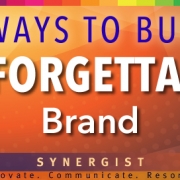Put the brand in the hands of the users
SALT and The BMW Guggenheim Lab allow users to lend their own interpretations to their brands within boundaries they set up. At the core of both these organizations is collaboration and participation.
The theory behind this type of “non-logo” encourages community-building, interactivity, mutability and allows users to truly feel and be part of the experience. It’s like social networking for design. Mirroring the organizations they portray, anyone can play a part in the organizations interpretation.
Istanbul’s SALT calls itself a “designing institution”
SALT’s “non-logo” will be remade in a different typeface every four months by rotating designers. The letters form a dispersed “logo” and articulate the idea that SALT itself is a work in progress, with their continually evolving design. This identity is appropriate for SALT as a “designing institution”. They use a controlled system for new typefaces to be developed.
The BMW Guggenheim Lab, a mobile laboratory
The BMW Guggenheim Lab is a mobile laboratory traveling around the world to inspire innovative ideas for urban life. It can be experienced in NYC through October 16th. The Lab is a forum for thinking on urban planning so the power is in the hands of its participants. It makes sense that they form and evolve a visual representation through a controlled system.
Certainly this approach is not appropriate for all businesses, but it does work for these two organizations because of who they are, the results of a collaborative process with the user.
Visual brands, as we know them, are meant to gain recognition through repeated use and consistency.
The best brands are those that are built to last. They instill everything their organizations are, building familiarity, confidence and trust. These two organizations actually do this but will they build something lasting that can be seen as a representation in all media? Or is it just important that their visual representations continually evolve with their organizations?
These collaborative approaches certainly portray innovative solutions in the realm of branding and provide food for thought.


